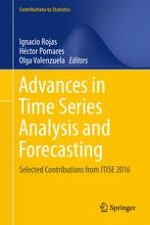This volume of selected and peer-reviewed contributions on the latest developments in time series analysis and forecasting updates the reader on topics such as analysis of irregularly sampled time series, multi-scale analysis of univariate and multivariate time series, linear and non-linear time series models, advanced time series forecasting methods, applications in time series analysis and forecasting, advanced methods and online learning in time series and high-dimensional and complex/big data time series. The contributions were originally presented at the International Work-Conference on Time Series, ITISE 2016, held in Granada, Spain, June 27-29, 2016.
The series of ITISE conferences provides a forum for scientists, engineers, educators and students to discuss the latest ideas and implementations in the foundations, theory, models and applications in the field of time series analysis and forecasting. It focuses on interdisciplinary and multidisciplinary research encompassing the disciplines of computer science, mathematics, statistics and econometrics.
